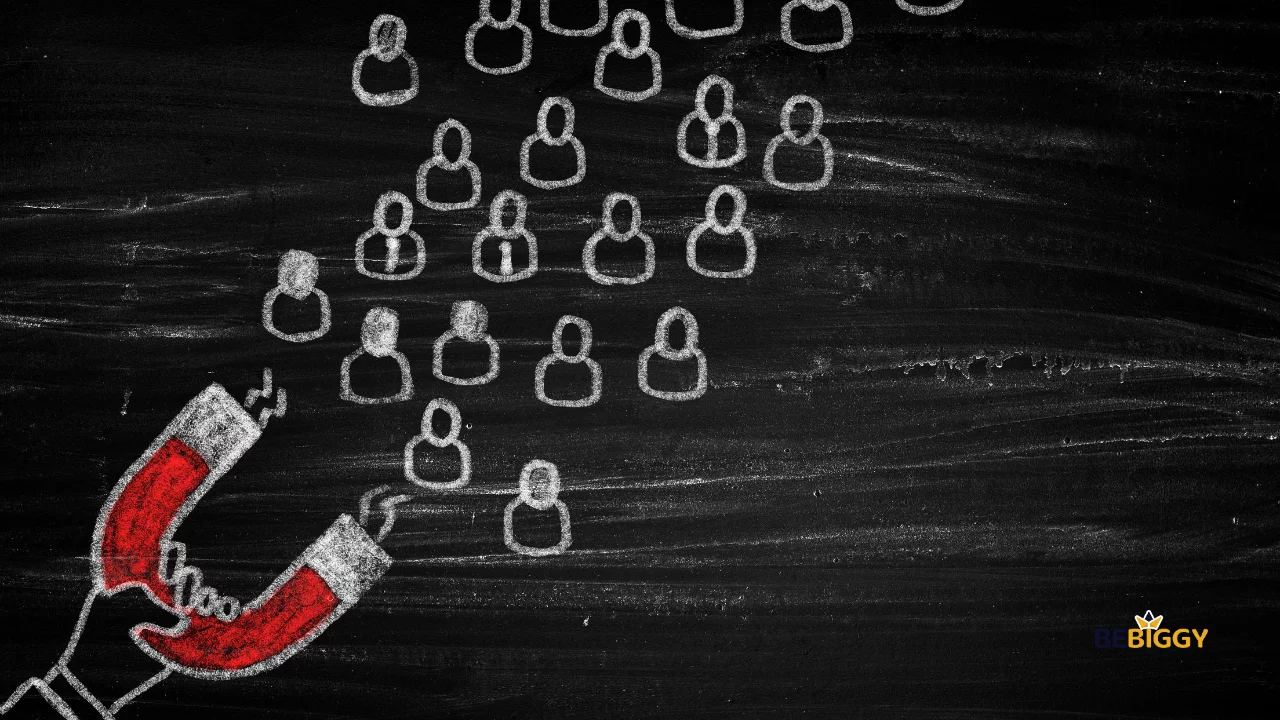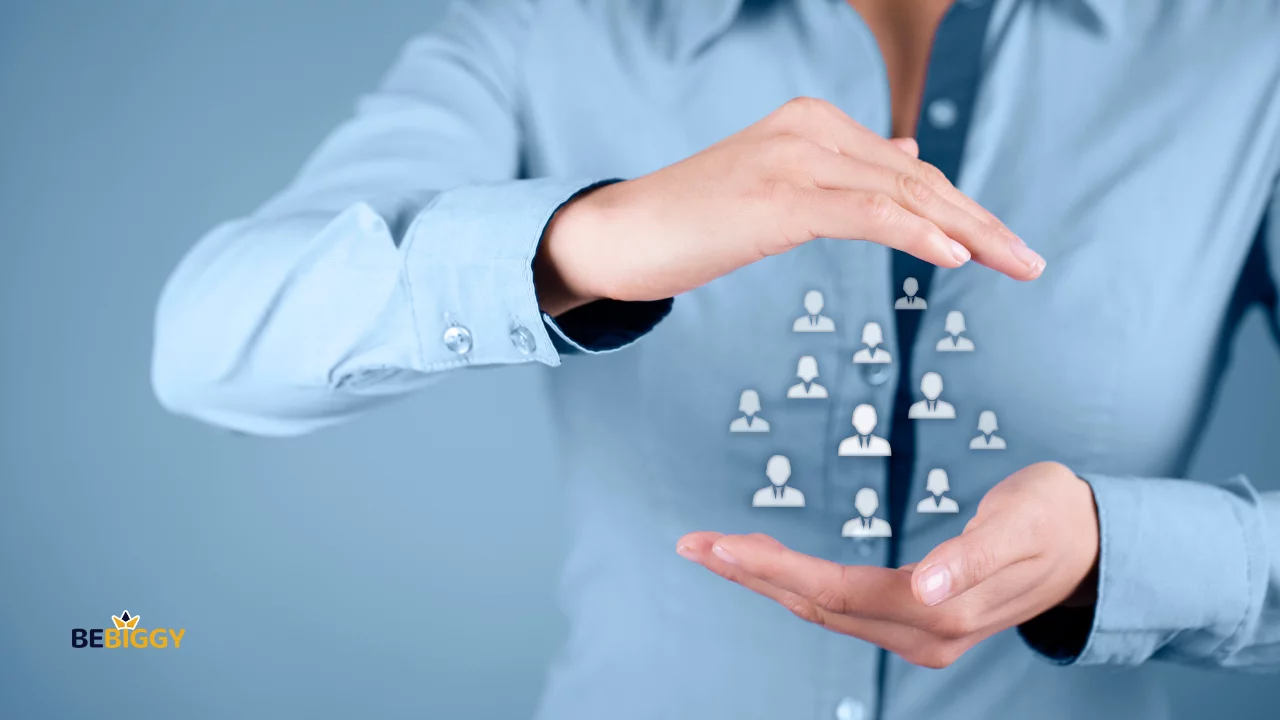Shopify Vs eBay, Which is best?
When considering the world of dropshipping, two prominent names emerge: Shopify dropshipping and eBay dropshipping. These two platforms cater to entrepreneurs looking to start their online businesses, but they offer distinct approaches and come with their own unique sets of advantages and challenges.
In this comparison, we’ll delve into the key differences between Shopify and eBay dropshipping, helping you decide which platform aligns best with your business goals and strategies.
Overview of Shopify Dropshipping and eBay Dropshipping
Shopify Dropshipping
With Shopify, you have complete control over your online store. You can design your website, customize your branding, and have access to various apps and resources to optimize your business.
Shopify provides a user-friendly interface that makes managing your inventory, processing orders, and handling payments easy. You’ll also have the flexibility to choose your suppliers and set your pricing strategy.
eBay Dropshipping
eBay is a well-known e-commerce platform where sellers can easily list and sell their products online. With eBay dropshipping, you can use the platform’s large customer base and established reputation.
You don’t need to create a website or worry about driving traffic since eBay already has a massive audience. However, you’ll have less control over branding and customization options. Additionally, eBay has strict policies and can be more competitive with fees and seller ratings.
Shopify Vs eBay: Ease of Starting
Starting your dropshipping business on eBay
EBay offers aspiring drop shippers a relatively straightforward way to start a business.
- Simplicity: eBay provides a straightforward entry point for aspiring drop shippers, making it accessible for newcomers to start a business quickly.
- Large Customer Base: Utilizing eBay’s vast client base provides access to potential customers, expanding market reach.
- Efficiency: Setting up an account and listing products on eBay is a quick and hassle-free, appealing to those seeking a swift launch.
However, there are some limitations to consider, such as:
- Strict Policies: eBay enforces stringent policies and regulations, which may restrict the sale of certain products or limit the participation of specific sellers. Aspiring drop shippers should know these limitations when choosing their product offerings.
- Intense Competition: The eBay marketplace is known for its fierce competition, with numerous sellers offering similar products. To thrive, it’s crucial to devise effective strategies that set your store apart from the rest.
- Differentiation Challenge: Given the crowded nature of eBay, aspiring drop shippers face the challenge of finding unique selling points and methods to distinguish their stores from the competition. This demands creative approaches to attract and retain customers.
Starting your dropshipping business on Shopify
If you’re looking to start a dropshipping business, Shopify offers a user-friendly and comprehensive platform to get you started.
- User-Friendly Interface: Shopify boasts an easy-to-use interface, perfect for individuals without coding skills. It offers a variety of customizable themes, enabling you to design a professional-looking online store effortlessly.
- Integrated Features: The platform provides seamless inventory management, order fulfillment, and secure payment options, streamlining your operations and enhancing the shopping experience for your customers.
- Branding Control: Shopify grants you greater control over branding and customer experience. This flexibility empowers you to establish a robust and recognizable brand for your business.
- Marketing Support: Shopify provides a variety of marketing tools and resources to promote your store and attract customers effectively. These resources can be invaluable in growing your online presence and increasing sales.
eBay may be a convenient option for quickly starting a dropshipping business, but it has limitations and high competition. On the other hand, Shopify offers more control, flexibility, and resources for building a successful online store.
To choose the right platform for your dropshipping business, it is important to consider your goals and priorities. Take your time to evaluate the available options and select the one that aligns with your business needs.
Shopify Vs eBay: Beginner-Friendliness

Benefits and limitations of eBay for beginners
eBay can be an attractive option for beginners looking to start their dropshipping journey.
- Ready-Made Marketplace: eBay presents a pre-established marketplace with a vast customer base, simplifying reaching a large audience for those new to dropshipping.
- Seller Support: eBay offers tools and resources designed to assist new sellers in navigating the platform and swiftly setting up their stores, reducing the learning curve for beginners.
Yet, prospective eBay dropshippers should be mindful of certain drawbacks.
- Listing Fees: eBay imposes fees for listing products, which can accumulate depending on the number of items you offer. These costs need to be factored into your pricing strategy to maintain profitability.
- Sales Commission: eBay takes a percentage of each sale as a commission. While this fee contributes to eBay’s revenue, it can impact your overall profitability as a drop shipper. Therefore, accounting for this commission when pricing your products is crucial.
- Intense Competition: The eBay marketplace is known for its fierce competition, with numerous sellers offering similar products. For beginners, establishing a visible presence and gaining a competitive edge in this crowded marketplace can be a challenging and time-consuming endeavor.
Benefits and limitations of Shopify for beginners
On the other hand, Shopify offers a user-friendly platform specifically designed for e-commerce.
- Customizable Templates: Shopify offers beginners access to customizable templates, enabling the creation of an aesthetically pleasing online store without extensive design skills.
- Intuitive Design Tools: The platform provides intuitive design tools, simplifying the process of creating and customizing your store, even for those new to e-commerce.
- Dropshipping Integration: Shopify seamlessly integrates with dropshipping apps, streamlining the setup of an online store and managing product listings, making it easier for beginners to start selling products.
- Customer Support and Education: Shopify offers comprehensive customer support and a variety of educational resources tailored to beginners, ensuring they receive assistance and guidance as they navigate the platform.
However, newcomers to the e-commerce world must consider this aspect when considering Shopify as their platform of choice, which can impact their budgeting and financial planning.
- Monthly Subscription Fee: Shopify requires a monthly subscription fee, which may be a consideration for those just starting their e-commerce journey. Newcomers should factor this recurring cost into their budgeting plans.
Both eBay and Shopify have their advantages and disadvantages for beginners. eBay provides access to a large marketplace but comes with fees and intense competition. Shopify offers a user-friendly platform but requires a monthly subscription. Dropshipping on eBay or Shopify will ultimately come down to the individual’s particular requirements and preferences.
Shopify Vs eBay: Long-Term Success

Why Shopify is better for long-term success
Regarding dropshipping, Shopify stands out as a platform that offers long-term success. Here’s why:
- Control over your brand: With Shopify, you have complete control over your brand identity. You can customize your online store, create a unique customer experience, and build brand loyalty. This level of control is crucial for long-term success in establishing a strong and recognizable brand.
- Scalability: Shopify provides the infrastructure and tools to scale your dropshipping business. As your business expands, you can effortlessly include products, handle inventory, and fulfill orders. I will make sure to correct any spelling, grammar, or punctuation errors. This scalability ensures that your business can handle growth and sustain long-term success.
- Marketing and SEO: Shopify offers built-in marketing and SEO features that can help drive traffic and increase conversions. With powerful tools like email marketing, social media integration, and optimized product pages, you can attract and retain customers over the long term.
Challenges and Opportunities of eBay for Long-term Success
While eBay can be a viable platform for dropshipping, it presents particular challenges and opportunities for long-term success:
- Intense competition: The eBay marketplace is highly competitive, with thousands of sellers offering similar products. Standing out and gaining a competitive edge can be challenging, especially for new dropshippers.
- Dependence on eBay’s policies: eBay has strict policies and guidelines that sellers must adhere to. Violating policies may result in penalties or account suspension, limiting control over your business and brand.
- Lower profit margins: Due to the intense competition on eBay, sellers often have to price their products competitively, resulting in lower profit margins. To achieve long-term success, drop shippers need to find unique products or niche markets where they can differentiate themselves and maintain better profit margins.
While eBay can offer immediate sales and a large customer base, Shopify provides the stability, control, and scalability needed for long-term success in the dropshipping industry.
Shopify Vs eBay: Order Fulfillment and Shipping

Order fulfillment process on eBay
When dropshipping on eBay, the order fulfillment process can differ from other platforms. With eBay, the seller is the intermediary between the customer and the supplier. This process requires constant inventory monitoring and timely communication with the supplier to ensure smooth order fulfillment.
Here’s how it works:
- Customer Order: Receive an order from a customer through your online store.
- Order Placement: Manually place the order with your chosen supplier. This includes providing the supplier with the customer’s shipping address.
- Supplier Communication: Maintain consistent communication with the supplier to ensure the order is processed promptly.
- Inventory Monitoring: Continuously monitor the supplier’s inventory to prevent overselling or listing out-of-stock items.
- Shipping: The supplier ships the product directly to the customer, eliminating the need for you to handle physical inventory or shipping logistics.
- Order Tracking: Keep the customer informed by providing order tracking information if available.
- Customer Support: Address any customer inquiries or concerns regarding the order throughout the process.
Order fulfillment process on Shopify
Dropshipping on Shopify offers a more streamlined order fulfillment process. With the help of apps and integrations, Shopify allows sellers to automate much of their order fulfillment.
- Automated Order Transmission: When a customer places an order on a Shopify store, the order details are automatically forwarded to the designated supplier.
- Supplier Fulfillment: The supplier takes responsibility for order fulfillment, shipping the product directly to the customer. This streamlines the order processing workflow, reducing the need for manual intervention by the seller.
- Focus on Business Aspects: With automated order processing, sellers can allocate more time and attention to other facets of their business, such as marketing, customer acquisition, and strategy development.
Regarding shipping, both platforms offer integration with major shipping carriers, allowing sellers to generate shipping labels and track shipments quickly. This ensures timely delivery and shipment tracking for customers.
While eBay dropshipping requires more manual work and coordination between the seller and supplier, Shopify offers a more automated and streamlined order fulfillment process.
Shopify sellers can use various apps and integrations to simplify their operations and focus on scaling their business. Understanding the specifics of each platform can help you choose the one that best suits your business needs and allows for efficient and reliable order fulfillment.
Shopify Vs eBay: Tools and Features

Both Shopify and eBay offer unique tools and features to help entrepreneurs start and manage their online businesses. Here’s a comparison of what each platform has to offer:
eBay’s tools and features for dropshipping
eBay offers several tools and features to simplify the process for sellers. These include:
- Listing Tools: eBay provides easy-to-use listing tools that allow sellers to create and manage their product listings efficiently. These tools enable sellers to quickly upload product descriptions, images, and other details.
- Order fulfillment: eBay offers features that streamline order fulfillment. Sellers can easily track and manage orders, update inventory levels, and communicate with buyers through the platform.
- Shipping options: eBay provides various shipping options, including integration with major shipping carriers. Sellers can choose the most cost-effective and efficient shipping methods for their products.
- Customer support: eBay offers customer support to both sellers and buyers. Sellers can seek assistance for any issues during dropshipping, ensuring a smooth experience for all parties involved.
Shopify’s tools and features for dropshipping
Shopify’s tools and features empower sellers to succeed.
- Easy setup: Shopify offers a user-friendly interface that simplifies setting up an online store. Sellers can choose from various customizable templates to quickly create a professional-looking storefront.
- Product sourcing: Shopify integrates with numerous apps and suppliers, offering an extensive selection of products for sellers to choose from. This makes it easier for sellers to find profitable products to dropship.
- Order management: Shopify’s platform allows sellers to manage their orders efficiently. Sellers can automate order processing, track shipments, and update inventory levels seamlessly, ensuring a smooth fulfillment process.
- Payment options: Shopify provides secure payment gateways allowing sellers to accept customer payments. The platform supports various payment methods, providing convenience and flexibility for both sellers and buyers.
- Marketing and SEO: Shopify offers built-in marketing and SEO tools to help sellers promote their products and improve their online visibility. Sellers can optimize their product listings for search engines, run marketing campaigns, and leverage social media integration to drive traffic to their stores.
Both eBay and Shopify offer a range of tools and features to facilitate dropshipping. eBay excels in providing a user-friendly platform with seamless order processing and shipping options. On the other hand, Shopify offers a more comprehensive solution, with easy setup, product sourcing, order management, payment options, and marketing tools. The choice between eBay and Shopify ultimately depends on the specific business needs, budget, personal preferences, and goals of the seller.
Shopify Vs eBay: Customer Base and Traffic
Leveraging eBay’s customer base and traffic
eBay has a distinct advantage with its massive customer base and high traffic volume. With millions of users actively browsing and purchasing products on the platform, eBay provides you with the following benefits:
- Access to Established Customer Base: Leveraging eBay’s extensive customer base and high traffic levels grants drop shippers instant access to a pre-existing market, eliminating the need for substantial investments in marketing or advertising. This ready-made customer pool simplifies the process of reaching potential buyers.
- Reputation and Visibility: eBay’s long-standing reputation and strong search engine visibility can significantly enhance the visibility of your products. This increase in visibility can lead to higher sales and better brand recognition, as customers trust eBay as a reliable e-commerce platform.
- Market Exposure: With eBay’s extensive reach, your products gain exposure to a diverse and large market. This diverse customer base can open up a wide range of sales opportunities, allowing you to reach customers with various preferences and needs.
Generating your traffic on Shopify
On the other hand, if you choose to build your dropshipping business on Shopify, you have the flexibility and control to generate your traffic. Unlike eBay, where customers are already searching for products, Shopify requires you to drive traffic to your online store actively. Here are some strategies you can implement:
- Effective SEO: By implementing search engine optimization (SEO) techniques, you can attract high-quality organic traffic to your Shopify store. This strategy involves optimizing your website’s structure and content to improve its search engine ranking, increasing your store’s visibility and authority.
- Social Media Marketing: Utilizing social media can help promote brands, products, and content to target audiences, leading to loyal customers.
- Content Marketing: Making and disseminating valuable, interesting, and engaging material, such blog entries, videos, and guides, is known as content marketing. With this strategy, you may establish your authority in your market and gain your audience’s confidence while attracting high-quality visitors.
- Targeted Advertising: Paid advertising, such as Google Ads and Facebook Ads, allows you to reach specific audiences. You can target potential customers precisely based on interests, demographics, and online behavior to have complete control over your ad campaigns.
Leveraging eBay’s customer base and traffic benefits those seeking immediate exposure and sales. On the other hand, building a Shopify dropshipping business allows you to generate your traffic and build a brand for long-term success. Ultimately, the choice depends on your goals, resources, and marketing capabilities.
Shopify Vs eBay: Customizability and Branding

Creating a unique brand on Shopify
In terms of customizability and branding, Shopify takes the lead. With its easy-to-use interface, Shopify allows you to create a unique brand identity for your dropshipping business.
- Personalized Branding: You have the freedom to customize your online store with your logo, colors, fonts, and layouts. This level of personalization ensures that your brand identity stands out and aligns with the preferences of your target audience.
- Variety of Themes: Shopify provides a wide array of themes and templates to choose from when building your online store. These themes are designed to be mobile-responsive, ensuring a seamless shopping experience on all devices.
Customization options on eBay
On the other hand, eBay offers limited customization options compared to Shopify. While you can add a logo and customize the description of your products, your store’s overall appearance remains consistent with eBay’s branding.
This means that it can be more challenging to create a distinct brand identity that sets you apart from other eBay sellers. However, eBay does provide some tools to enhance your branding efforts.
- Custom eBay Store Header: eBay allows you to create a customized store header, enabling you to infuse your brand’s visual identity into your store’s design. This element provides a level of uniqueness and branding within the eBay marketplace.
- Unique Store Name: Choose a distinctive store name representing your brand and your products. Your store’s name can contribute to brand recognition and set you apart from other eBay sellers.
- Promotional Tools: eBay offers promotional tools that allow you to showcase your products more effectively. These tools can help you highlight featured items, offer discounts, and attract potential customers.
If customizability and branding are essential to your dropshipping business, Shopify is the clear winner. Shopify provides numerous customization options for creating a unique brand identity. While eBay offers some branding tools, they are more limited, making it more challenging to establish a distinct brand within the eBay marketplace.
Shopify Vs eBay: Support and Resources

Support and resources available for Shopify drop shippers
Shopify provides extensive resources for starting an online business:
- 24/7 Customer Support: The customer service staff at Shopify is ready around-the-clock to assist with any dropshipping-related queries or problems. Their accessibility ensures that you have help whenever you need it.
- Educational Materials: Shopify offers abundant educational resources, including guides, video tutorials, and online forums, tailored to help new drop shippers navigate the platform and foster the growth of their businesses.
- App and Integration Options: Shopify provides a variety of apps and integrations designed to enhance the functionality and success of your dropshipping business. These encompass tools for inventory management, marketing, analytics, and more, ensuring you have the tools needed for efficient and effective operations.
Support and resources available for eBay drop shippers
While eBay does not provide direct customer support for drop shippers, they do offer resources to help sellers succeed on their platform.
- Seller Center: eBay’s Seller Center is a comprehensive hub of information and guides to assist sellers in creating effective listings, optimizing product visibility, and addressing customer inquiries and issues. For new dropshippers, it is a useful source of knowledge.
- Community Forum: eBay hosts a community forum where sellers can connect with experienced counterparts, seek advice, ask questions, and share insights. This sense of community provides valuable support and guidance as new drop shippers navigate the eBay marketplace.
- Third-Party Tools and Services: eBay dropshippers can leverage third-party tools and services, such as listing software, order management systems, and analytics tools. These resources can streamline and automate various aspects of the dropshipping process, optimizing efficiency and productivity.
Overall, both Shopify and eBay offer support and resources for drop shippers, with Shopify providing more direct customer support and a wider range of integrated tools, while eBay offers a community forum and resources for sellers to learn from each other. The decision between the two platforms ultimately comes down to the unique requirements and preferences of the drop shipper.
Shopify Vs eBay: Fees and Expenses

Understanding the fees and expenses associated with Shopify and eBay dropshipping
When it comes to starting an online dropshipping business, understanding the fees and expenses involved is crucial. Both Shopify and eBay offer platforms for dropshipping, but they come with different pricing structures.
Shopify Pricing Plans: As a popular e-commerce platform, Shopify provides various pricing plans for its users.
- Basic Plan: Starting at $29 per month, the basic plan offers essential features for small and new businesses.
- Advanced Plan: The advanced plan costs $299 per month and is intended for larger enterprises and offers advanced features.
- Transaction Fees: Shopify charges transaction fees on top of the monthly plan, with rates ranging from 2% to 0.5%, depending on the selected plan.
eBay Seller Fees: The cost structure is a bit different on eBay.
- Insertion Fees: Charged when listing items for sale, insertion fees vary depending on the listing format and the initial price set by the seller.
- Final Value Fees: Calculated as a percentage of the total amount paid by the buyer, including shipping costs. These fees range from 2% to 12% based on the final sale price.
It’s important to consider the potential benefits of each platform when comparing the fees and expenses associated with Shopify and eBay dropshipping.
Shopify Vs eBay: Profit Margins

The success of your business is greatly influenced by the profit margins. Thus, it is crucial to have a good understanding of the profit margins to ensure a successful business. We will compare the profit margins of eBay dropshipping and Shopify dropshipping.
Profit margins with eBay Dropshipping
eBay dropshipping offers the advantage of a large customer base and an established marketplace. However, the profit margins can be lower compared to other platforms because of the following reasons:
- Fee Structure: eBay imposes various fees, including listing fees, final value fees, and PayPal transaction fees. These expenses can significantly reduce your profits, particularly when dealing with low-margin products.
- Intense competition: eBay’s competitive marketplace often leads to price competition. With numerous sellers offering identical products, it can be challenging to find unique items that allow you to command higher prices and boost profit margins.
- Shipping Costs: Consider the cost of shipping, which can further affect your profitability. Shipping expenses can erode your margins, so it’s crucial to incorporate them into your pricing strategy.
Profit margins with Shopify Dropshipping
Shopify dropshipping provides more control over your profit margins.
- Price Control: As the owner of your online store, you have the freedom to set your prices and determine desired profit margins. Unlike eBay, Shopify doesn’t charge listing fees or take a percentage of each sale, allowing you to retain a larger share of your profits.
- Profit Margin Flexibility: Shopify allows you to select high-profit items from various suppliers. This flexibility enables you to choose products that align with your profit goals.
- Marketing Strategies: Utilize marketing strategies like upselling and cross-selling to increase average order values and enhance your overall profits. These tactics can be integrated into your Shopify store to boost revenue.
While eBay dropshipping offers access to a large audience, the profit margins can be lower due to fees and intense competition. On the other hand, Shopify dropshipping empowers you to set your own prices and achieve higher profit margins. It’s crucial to carefully assess the fees and costs associated with each platform to make an informed decision for your dropshipping business.
Comparing the Advantages and Disadvantages of Shopify and eBay Dropshipping

When starting a dropshipping business, Shopify and eBay are two popular platforms that often come to mind. Before making a decision, it’s important to understand the advantages and disadvantages of each platform. Let’s examine the pros and cons of Shopify and eBay dropshipping.
Shopify Dropshipping:
Advantages:
- Full control: With Shopify, you have full control over your website design, branding, and customer experience. This allows you to create a unique and professional online store tailored to your specific business needs.
- Scalability: Shopify offers a scalable platform for high-volume sales and traffic. As your business expands, you can effortlessly upgrade your plan to support additional products and customers.
- Customization: Shopify offers customizable themes and apps for a personalized store with added functionality.
- Payment options: Shopify provides over 100 payment gateways, giving customers various flexible payment options worldwide.
- Marketing tools: Shopify offers built-in SEO features, analytics, and integration with popular marketing tools like Google Analytics and Facebook Pixel, helping you drive traffic and increase conversions.
Disadvantages:
- Monthly cost: Shopify offers monthly subscription plans ranging from $29 to $299. This cost may be a barrier for beginners or those with limited budgets.
- Transaction fees: Unless you use Shopify Payments, which has its own transaction fees, additional fees may apply for using external payment gateways.
- Technical knowledge: While Shopify is generally user-friendly, some technical knowledge may be required to customize your store and utilize advanced features fully.
eBay Dropshipping:
Advantages:
- Large customer base: eBay has a massive user base, providing access to millions of potential customers. This can help generate sales quickly and easily.
- Low start-up costs: With eBay, you don’t need to invest in building a website or paying for hosting. It’s a cost-effective option for beginners or those on a tight budget.
- User-friendly: eBay’s platform is designed to be user-friendly, making it easy for sellers to list products, manage inventory, and complete transactions.
- Shipping and logistics: eBay offers streamlined shipping and logistics solutions, making it easier to manage the fulfillment process.
Disadvantages:
- Competition: With millions of sellers on eBay, competition can be fierce. Staying out and attracting customers in a saturated marketplace may take time and effort.
- Lack of control: eBay has strict policies and guidelines that sellers must adhere to, limiting the level of control you have over your business and brand.
- Lower profit margins: Due to intense competition and eBay fees, profit margins can be lower than other platforms or selling directly through your website.
Shopify and eBay both offer unique advantages and disadvantages for dropshipping businesses. Shopify provides a professional and scalable platform with full control over your brand and customer experience.
However, it comes with a monthly cost and transaction fees. on the other hand, eBay has a large customer base and low start-up costs, but there is fierce competition and limited control over your business. The ideal decision ultimately comes down to your unique business needs, spending limit, and long-term objectives.
Shopify Vs eBay: Choosing the Right Platform for Your Dropshipping Business
When choosing between Shopify dropshipping and eBay dropshipping, consider the following factors:
- Control: How much control do you want over your online store? If you prefer complete control over your brand, website design, and customer experience, then Shopify dropshipping is the better option.
- Customization: Do you want the flexibility to customize your website to match your brand? Shopify offers a variety of customizable themes for your online store’s design and layout.
- Long-term growth: Are you looking to build a long-term, sustainable business? Shopify offers more scalability and growth potential with its advanced features, marketing tools, and app integrations.
- Simplicity: eBay dropshipping might be more suitable if you want a simple and straightforward approach to dropshipping. With eBay, you can quickly list products and start selling without needing a separate website.
- Customer base: Consider the target audience and customer base of each platform. eBay has a large customer base, which can provide built-in traffic and potential buyers for your products.
- Cost: Evaluate the cost of each platform, including monthly fees, transaction fees, and additional expenses. Shopify offers more features and customization options for a monthly subscription fee.
In the end, the ideal decision relies upon your personal preferences, objectives, and financial plan. Let me know if you need any further assistance with this.Some use both platforms, with Shopify as their main store and eBay for added sales channels.
Before deciding, research, compare, and seek advice from fellow dropshippers. Success isn’t just about the platform but also your strategies, products, service, and commitment to building a thriving online business.
FAQs about Shopify vs eBay

Is eBay better than Shopify?
EBay is not inherently better than Shopify; they cater to different business models and preferences. eBay is a well-established online marketplace with a vast customer base, making it suitable if you prefer to leverage an existing audience. However, it limits your control over branding and customization. On the other hand, Shopify offers more flexibility, control, and opportunities for long-term brand growth. Whether eBay or Shopify is better depends on your specific business goals and how much control and customization you require.
Is it OK to dropship on eBay?
Yes, it is perfectly okay to dropship on eBay, as long as you adhere to eBay’s policies and guidelines. eBay has established rules to maintain a positive experience for buyers and sellers. Following these rules, providing excellent customer service, and offering quality products make dropshipping on eBay a legitimate and viable business model.
Is it easier to dropship on eBay?
Yes, dropshipping on eBay can be easier, especially for beginners. eBay provides a straightforward entry point into the world of e-commerce. You don’t need to create a separate website or worry about driving traffic, as eBay already has a vast audience. Setting up an account and listing products on eBay is a user-friendly process that appeals to those seeking a quick and hassle-free way to start a business.
Is Shopify worth it for dropshipping?
Yes, Shopify can be worth it for dropshipping, depending on your business goals and how you utilize its features. It offers significant advantages, including control over your branding, scalability, and access to various tools and resources for building a long-term business. However, Shopify does come with a cost, including monthly subscription fees, which you should consider in your budgeting. If you are dedicated to creating a unique brand and long-term success, Shopify can be a valuable platform for drop shipping.
Shopify Vs eBay: Conclusion
In conclusion, both Shopify dropshipping and eBay dropshipping have their own strengths and weaknesses, and the choice between the two ultimately depends on your specific needs and goals as a dropshipper.
If you value full control over your online store, customization options, and the potential for long-term growth, then Shopify dropshipping might be your better choice. With its user-friendly interface, integrated marketing tools, and extensive app store, Shopify provides a comprehensive platform for setting up and scaling your dropshipping business.
On the other hand, if you prefer a more straightforward and hassle-free approach to dropshipping, eBay dropshipping could be the way to go. With its large customer base, built-in traffic, and simplified listing process, eBay lets you quickly start selling products without needing a separate website.










 What Is Shopify Dropshipping and How Does It Work?
What Is Shopify Dropshipping and How Does It Work?  Shopify Dropshipping: What You Need to Know Before Buying a Business?
Shopify Dropshipping: What You Need to Know Before Buying a Business?  How to Dropship on Shopify: Step-by-Step Guide
How to Dropship on Shopify: Step-by-Step Guide  Guide to Finding Reliable Shopify Dropshipping Suppliers [100% Success]
Guide to Finding Reliable Shopify Dropshipping Suppliers [100% Success]